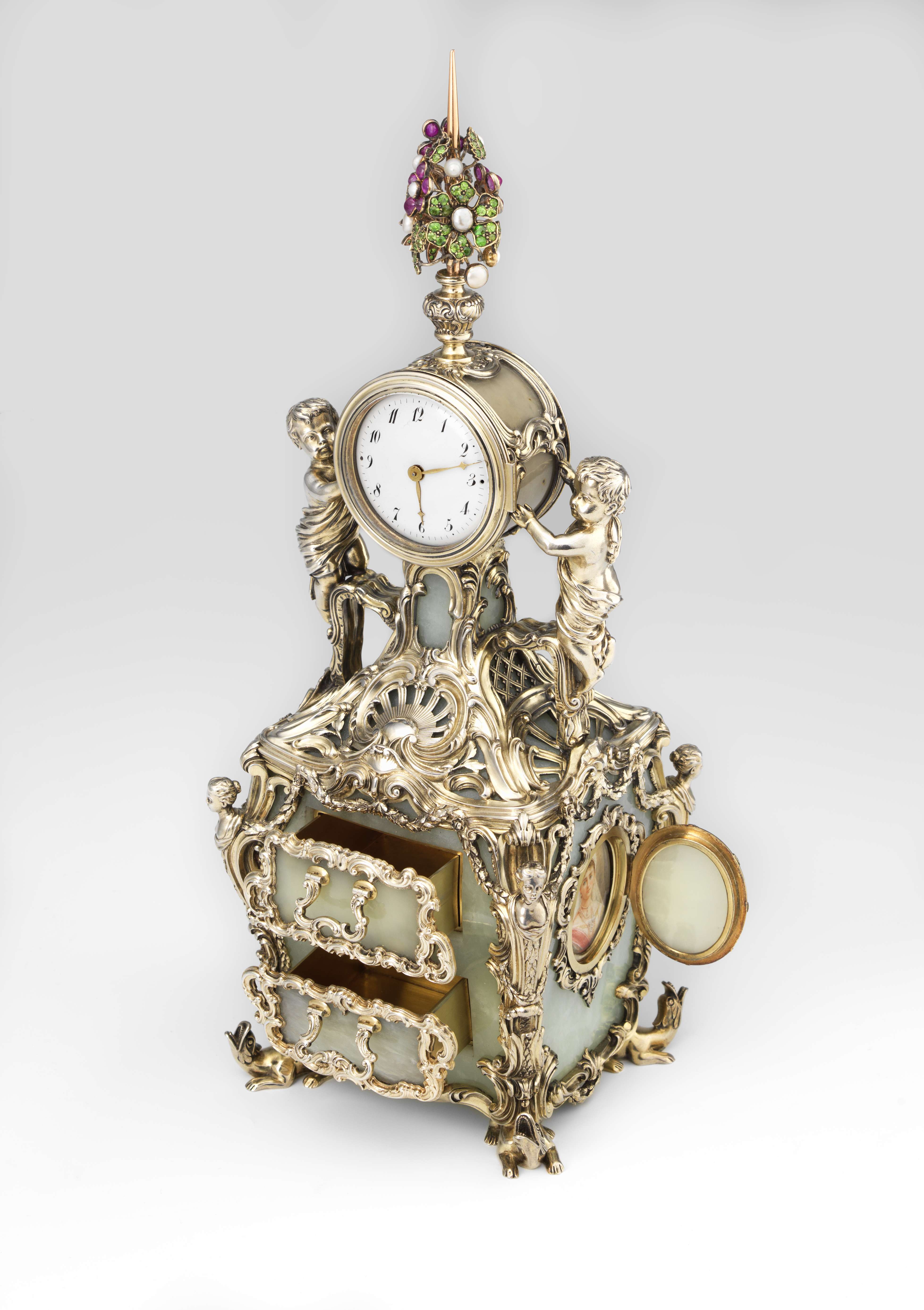On Time: Giving Form to the Fleeting
Travel through time via the instruments and decorative objects created to measure it
 For millennia, human civilizations have devised methods and systems of quantifying and measuring time. For the first time, Hillwood will present the museum's robust collection of lavish 18th, 19th, and 20th-century timepieces, displaying these beautiful objects alongside historic and contemporary loans to explore horology's place in society, both culturally and stylistically.
For millennia, human civilizations have devised methods and systems of quantifying and measuring time. For the first time, Hillwood will present the museum's robust collection of lavish 18th, 19th, and 20th-century timepieces, displaying these beautiful objects alongside historic and contemporary loans to explore horology's place in society, both culturally and stylistically.
The History of Horology
Humans created instruments to tell time, including hourglasses, sundials, and clocks, which became integral elements of material culture. As seen in Hillwood's collection, the 18th and 19th centuries saw rise to rococo, Neoclassical, and revival styles in timepieces to harmonize with interiors in addition to fashionable and exquisitely detailed watches made using precious materials. In Marjorie Post's lifetime, more modern examples with minimal aesthetics became popular, particularly as functional clocks made of less luxurious materials were more widely owned and the digital clock was created in 1953. The exhibition will trace these timepieces throughout history, offering insight into how these complex objects were made, how mechanisms function, and how they were displayed or worn.
Timepieces on View
Organized chronologically, On Time will open with an overview of the history of horology before the 18th century, highlighting examples from antiquity and the Renaissance. The crux of the exhibition will feature the most extravagant clocks and watches from Hillwood's collection, including: a long case clock, minutely detailed bejeweled watches, a rare French clock depicting the female personification of Africa, and a range of examples from Fabergé, Cartier, and Tiffany & Co. It will conclude with an exploration into the present-day experience of time from the dominance of digital clocks to the preservation of traditional watchmaking in the 21st century to the presence of time and horology in contemporary art.
Sponsors
On Time: Giving Form to the Fleeting is supported by The Marjorie Merriweather Post Foundation, Ellen MacNeille Charles, Martha R. Johnston, Jess and Clayton Kratz, The Cheremeteff Richardson Philanthropic Fund, Ms. Nedenia Rumbough and Mr. Jan Roosenburg, and Linda and Bill Goldman. All exhibitions and programs are funded in part by the U.S. Commission of Fine Arts through the National Capital Arts and Cultural Affairs Program. This project was supported by the DC Commission on the Arts and Humanities.


